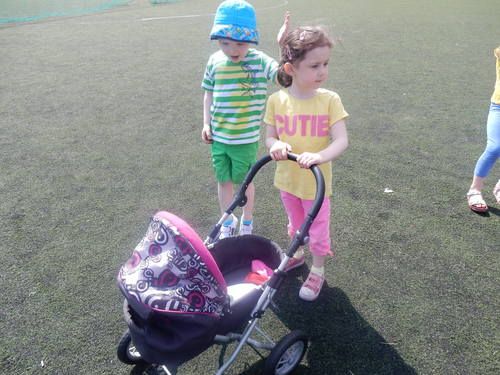CREATIVE / TEXTURAL
This includes sand/water, play dough, free art, such as painting, cutting and pasting.
The child is also given opportunities to explore different textural materials such as lentils, tissue papers, rough and smooth materials and objects associated with nature including leaves, feathers, tree bark etc.
The purpose of these exercises is to develop awareness and help children identify different textures in the natural environment.

This gloop is really sticky

I can do these buttons all by myself!
PRACTICAL LIFE
Polishing, washing, buttoning, and so on help the child care for himself and his environment without unnecessary help from adult. “Never help a child with a task with which he can succeed.” Maria Montessori.
These exercises are the cornerstone of the Montessori Method of education, developing independence, responsibility, concentration, cognitive and motor skills
SENSORIAL
Children learn to order and classify impressions, by touching, seeing, smelling tasting and listening.
The sensorial materials bring order to the child’s mind, improving his awareness, in other words helping the child to ‘know what he sees.’
A young child who worked with the Geometric Cabinet came to us in class and said his cat’s eyes were like an ellipse. This is an example of a young child creating a mental image and using this to identify the image in his environment.

Oops! the baby cube nearly fell dows!

I am four now!
MATHEMATICS
Number rhymes; songs and stories initially help the child become aware of number. The child is then introduced to concepts 0-10 using a variety of concrete materials, building concepts of quantity before introducing symbols.
The specifically designed maths materials enables the child to grasp mathematical concepts which lays the foundation for primary school maths.
LANGUAGE
The Montessori environment is rich in oral language opportunities, allowing the child to experience conversation, rhyme, stories and poetry.
When the child is ready he is introduced to the more formal materials using a phonetic approach.

Can you read me a story please?

I wonder can the cow swim in the pond?
CULTURAL
The cultural activities include art, music, nature study, history, and geography. As with all the other materials the cultural materials satisfy the child’s need for activity.
Examples of cultural materials are; farm animal, wild animals, dinosaurs, jigsaws, matching picture cards, musical instruments, free art and much more.
Various themes are explored which build the child’s knowledge and understanding of the world.
Music
Children relish having fun, singing, clapping, marching. and playing percussion instruments.
We use songs carefully composed to allow the children to explore different musical concepts rhythm, pitch,melody, and tempo in an enjoyable and stimulating way.
All of this gives the child a love and understanding and love of music.

These drums are cool!

We are pretending to be trees
Childrens Yoga
Our weekly yoga programme introduced with imaginary animals, stories and music is a delight for the young child. The benefits of yoga include increasing self-awareness, building self esteem and strengthening their bodies
Free Play
In accordance with the Aistear and Siolta Framework it is necessary to legitimise and secure the play of play in ECCE and recognise the role of play as a fundamental need and right of all children.
Our curriculum incorporates Play into the Montessori Programme by providing a variety of materials to accommodate pretend, fantasy and imaginative play.

I'll be the mommy you can be the daddy
